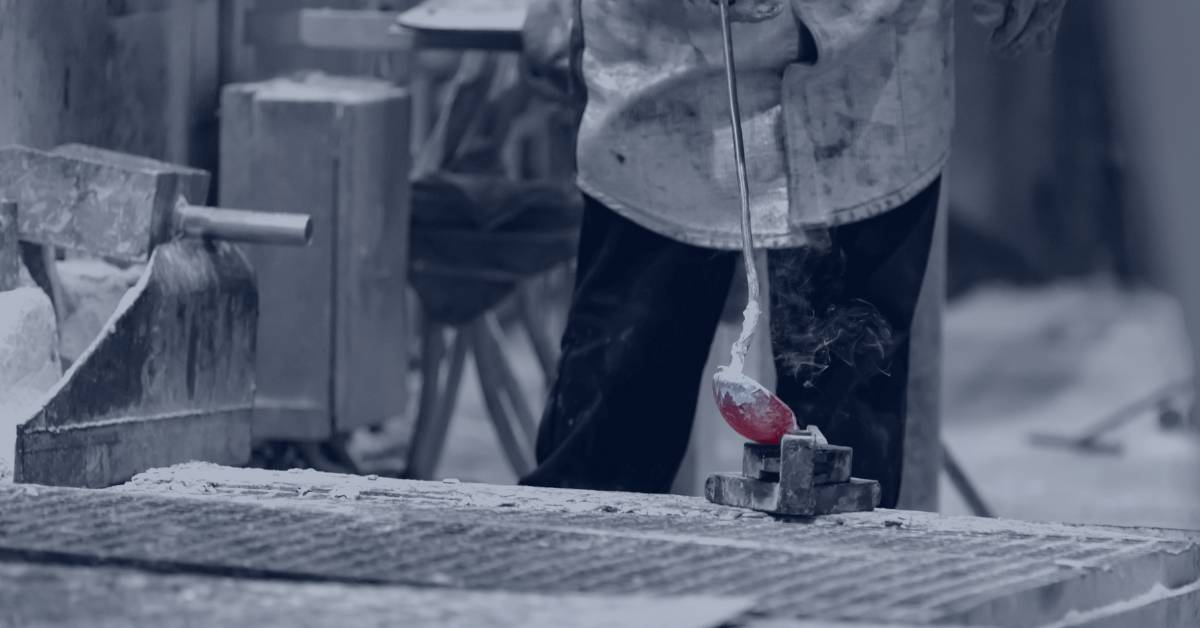The Single Strategy To Use For Aluminum Castings Company
Wiki Article
Little Known Facts About Aluminum Castings Company.
Table of ContentsNot known Facts About Aluminum Castings CompanyMore About Aluminum Castings CompanyThe Ultimate Guide To Aluminum Castings CompanyAluminum Castings Company Fundamentals ExplainedThe Of Aluminum Castings Company9 Easy Facts About Aluminum Castings Company ShownGetting My Aluminum Castings Company To WorkThe Ultimate Guide To Aluminum Castings Company
There are two key kinds of die casting used in the light weight aluminum casting market: warm chamber die spreading and cold chamber die spreading. The key difference between these techniques is just how the molten metal is delivered to the mold and mildew. In hot chamber pass away casting, typically used for reduced melting factor steels, the fusion is straight attached to the machine, and a plunger forces the material with a gooseneck right into the die tooth cavity.
What Does Aluminum Castings Company Do?
In these methods, the mold and mildew is intentionally ruined or broken away in order to extract the completed aluminum spreading. Common procedures under the category of expendable mold and mildew casting consist of (financial investment casting),,, and financial investment spreading. When manufacturing custom-made aluminum components making use of expendable molds, suppliers put molten aluminum or light weight aluminum alloys into the mold and mildew, which is then damaged apart to release the strengthened metal part.The is among the oldest and most commonly used forms of light weight aluminum spreading. It involves condensing specialty factory sand, often reinforced with clay or material, around a precisely crafted recyclable pattern that determines the form and interior information of the finished light weight aluminum item. The pattern system includes risers and vents to manage the circulation of molten steel and to avoid casting flaws such as contraction porosity.
What Does Aluminum Castings Company Do?

This mold is then preheated before the putting of molten light weight aluminum or light weight aluminum alloy. As the metal loads the covering, it records the elaborate information and fine surface coating of the mold. Once cooled down, the ceramic is mechanically or chemically broken away, permitting for the elimination and separation of specific cast parts.
Unknown Facts About Aluminum Castings Company
Permanent mold casting utilizes recyclable metal mold and mildews and is excellent for mass manufacturing with constant quality and much less waste. Expendable mold spreading uses single-use molds, like sand or foam, offering style adaptability and lower tooling costs for prototypes or brief runs. Pass away casting is best for creating high quantities of aluminum components that need limited resistances, fine information, and smooth surfaces.The Toshiba Equipment DC-J Collection consists of pass away casting equipments ideal for light weight aluminum. Understood for their durable building and construction and high shot efficiency, these devices make sure efficient and exact casting (Aluminum Castings Company).

While light weight aluminum can be made use of in its pure type, it is typically alloyed with various other metals to improve its homes or the homes of the various other steels. Aluminum alloys are classified right into eight series, phoned number from one to eight.
Some Ideas on Aluminum Castings Company You Need To Know
This alloying enhances the strength and solidity of light weight aluminum yet reduces its ductility and corrosion resistance. The 2000 collection alloys are testing to weld yet can be heat treated to improve their buildings. The 3000 series alloys are mainly alloyed with manganese. This mix improves corrosion resistance while offering modest toughness.Furthermore, it features high ductility and a very smooth completed surface. The 4000 series alloys are alloyed with silicon, which decreases the melting point and improves fluidness. This makes it a prominent choice for casting, as it is simple to form in its molten state. The 4000 series is also frequently used as a filler for welding and brazing applications.
The Main Principles Of Aluminum Castings Company
This collection is classified as a high-strength alloy, especially suited for sheet and plate applications as a result of its superb weldability. Its resistance to corrosion from acids and antacid makes it ideal for use in rough and aggressive environments (Core Making). The 6000 series alloys are alloyed with both magnesium and silicon, providing an equilibrium of toughness, mechanical residential or commercial properties, and rust resistanceProcessing the 6000 series calls for specialized and innovative devices, which can be complicated and expensive. This collection is known for its superb deterioration and oxidation resistance, as well as its simplicity of covering, therapy, and workability. The 7000 series light weight aluminum alloys are the best and most sturdy among light weight aluminum kinds, with toughness comparable to around two-thirds of industrial-grade A3 steel.
A Biased View of Aluminum Castings Company
Zinc address is the primary alloying element in the 7000 series, enhancing the firmness of the light weight aluminum, even though zinc's hardness resembles that of light weight aluminum on the Mohs range. The 8000 collection aluminum alloys are mostly alloyed with tin, in addition to percentages of copper and nickel (Sand Molding). While these alloys offer lower toughness contrasted to various other collection, they master machinability and use resistanceLight weight aluminum cast heatsinks are electrically conductive, allowing them to be based successfully. They are typically cast with integrated attributes that lessen the demand for additional procedures, such as additional machining or assembly, bring about further price financial savings. Aluminum casting is regularly used to manufacture brackets for both durable industrial equipment and house devices.
Not known Details About Aluminum Castings Company
The single-piece building of aluminum braces boosts their stamina and resilience, minimizing the probability of failure. If holes are called for, they can be included directly in the spreading mold, lessening the requirement for post-production completing (https://filesharingtalk.com/members/625115-alumnmcstngs?tab=aboutme&simple=1). Makers have progressively taken on light weight aluminum spreading for golf devices as a result of its toughness, stability, and adaptability in shapingReport this wiki page